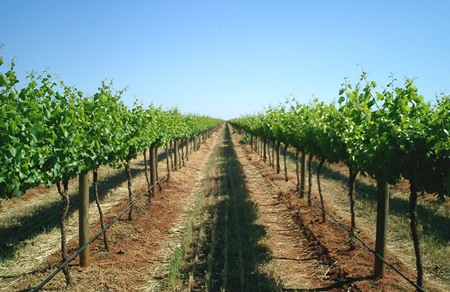Down at the village tavern a few nights ago, the conversation – as it so often does – turned to wine. Someone remarked that the enjoyment of wine is a matter of personal taste and that’s the end of it. Well no, not quite. I’d be the first to agree that personal taste has a significant influence on whether you actually like a wine or not but if you want to go beyond the simplistic “I like it” or “I don’t like it” stage of wine drinking, personal taste is rather unreliable. A friend of mine was puzzled when I described a particular wine as “superb” but added that I didn’t enjoy it very much. I could say much the same thing about some of Wagner’s music. There are a few wines that I actively dislike, but that doesn’t mean that you will dislike them too. In fact, you might enjoy them very much.
International wine competitions have always been popular in the wine trade. Wine-makers enter these events because winning a medal or receiving a commendation can bring a bit of kudos – and of course increase sales. When wines are given awards by professional judges at competitions, personal taste has to be put to one side, at least in the short term. So what do professionals actually look for when they’re assessing a wine? Why do some wines manage to win gold and silver medals at wine competitions, while others are awarded only a bronze?
 Brookford vineyard: French varietals growing Australian style.
Brookford vineyard: French varietals growing Australian style.
In her splendid book entitled The Wine Bible, Karen MacNeil explains how to assess wine like an expert. She suggests that one of the issues to consider is whether the wine is true to the grape; in other words, whether the wine really brings out the grape’s essential character. Of course, it helps if you know what this “essential character” is supposed to be in the first place. Another issue is whether the wine is integrated, in that the various components of the taste, such as the acidity, the tannins and the alcohol content are well-balanced. Another consideration is how the wine presents itself through aromas and flavours and whether these are finely focused or diffused and indistinct. MacNeil uses the analogy of the difference between the picture quality of an old black-and-white TV compared with that of a modern high definition model. Another issue is complexity. Some wines produce an almost symphonic aroma with a variety of smells and dimensions whereas simple wines tend to seem flat and one-dimensional. It’s that quality that makes you want to sniff and taste again and again. Finally, there’s that elusive quality that Karen MacNeil calls “connectedness” which I think I’d describe as “a sense of place.”
I admit that these are all pretty general and in any case, they only provide first impressions. If we want to take our assessment further, then we need to assess things like colour, aroma, acidity, tannins, oakiness, body-weight, dryness, fruitiness and after-taste. But I can sense your eyes glazing over already, so I shall save all that for another time. Let’s have a drink.
Brookford Colombard – Chardonnay 2011 (white), Australia (Bt. 456 @ Villa)
Both the wines this week are entry-level products from the respected Cranswick stable, known best for its excellent varietals. The Colombard grape hails from the Charente region of south-western France, where it’s usually distilled for Cognac. It’s quite popular as a blender in California and South Africa and is now being grown in Texas of all places. Interestingly, this grape also does very well in Thailand especially in vineyards in Khao Yai. Colombard (kaw-lawm-BAHR) has a high natural acidity, so it’s a good choice for blending with softer varieties.
This is a light gold with a delicate aroma of apricots. I could also smell ripe peaches, with a faint hint of herbs. Maybe there’s a suggestion of boiled sweets too. It has a lovely soft mouth-feel with a zesty tingle of bright acidity due to the 85% Colombard in the blend. At 11% alcohol, it’s quite a light-bodied wine with fruit well up-front. It was fermented in stainless steel tanks which help to preserve the natural freshness.
There’s a longish citrus finish too, making this a most attractive and well-balanced wine. It would make a jolly good apéritif, but the makers suggest that it would be a good partner for shellfish, Asian salads, roast chicken or creamy pasta dishes.
Brookford Merlot-Petit Verdot 2010 (red), Australia (Bt. 456 @ Villa)
You’ve heard of Merlot of course. Even my dogs have heard of Merlot. In Bordeaux, this soft and fleshy grape is traditionally used to tame down Cabernet Sauvignon, which is made of sterner stuff. In recent years Merlot (mehr-LOH) has become a major varietal in its own right. Petit Verdot (puh-TEE vehr-DOH), is one of the lesser stars of the red Bordeaux constellation. It’s normally used for firming-up Cabernet Sauvignon blends.
This wine has 85% Merlot in the blend and it’s a gorgeous deep purple-red with lots of thick legs forming as you swirl it around the glass. The aroma is very soft and fruity and reminds me of plum jam with overtones of red berries and herbs. There are hints of warm spices and oak on the aroma too, giving the impression that the wine is rather more expensive than it actually is.
Although the wine is quite dry and firm-bodied, the fruit is really up-front and there’s a pleasing foundation of soft tannin with a longish dry finish. Actually, the tannin gives the wine a rather French feel, so if you enjoy light French reds, you’ll probably like this too. Although I’d be quite happy to drink the wine on its own, it would make a good food partner. At just 12.5%, it’s an easy-drinker and would be excellent with light meat dishes. If you have run out of something Italian, it’s light enough to go well with pizza and pasta. “Up to you,” as they tend to say in this neck of the woods.




